Should I replace my VW steering box?
Ever wondered how the steering box on a VW Beetle, Transporter, and Karmann Ghia works? Does it needs servicing or can it just be adjusted and is there a better alternative? Follow our guide to help understand this subject and to decide what might need to be done on your own vehicle to help fix any steering woes.
What is a steering box?
Whilst some off-road and sports utility vehicles (SUVs) use a steering box, the majority of modern cars have a steering rack, which is perhaps easier to understand as there are fewer parts to consider; namely a steering column that fits into a toothed rack that moves from side to side to, in turn, alter the angle of the front road wheels.
A steering box consists of a compact assembly that comes in several varieties, all of which convert the rotation of the steering wheel to a sideways movement of a Pitman arm (also called a drop arm) and track rods which are connected to the front wheels, causing them to turn left or right. In the case of the VW models that we have mentioned there are three different designs used. A worm and peg, as seen on the Split Screen and Early Bay Windows (pre-1972), a worm and roller on post-1961 Type 1 cars, and post-1972 Type 2s, and a worm and threaded hemispherical ball on the pre-1961 Type 1. 1302 and 1303 Beetles also use a worm-and-roller design, but its layout is entirely different and is unique to these two models.
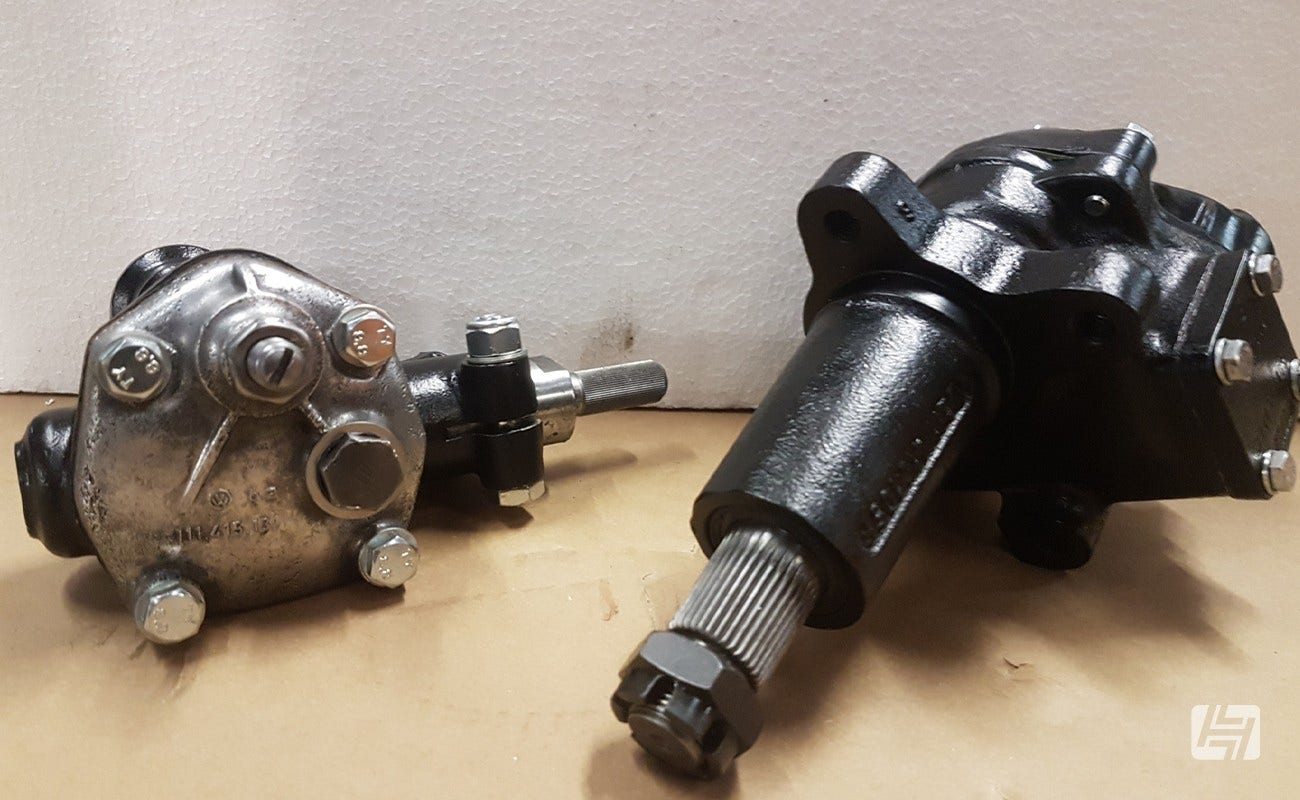

What is a worm and peg?
The steering column is attached to the input shaft of the steering box by means of a rubber coupling, or rag joint, on all models apart from a Split Screen, where the steering box and column are a single unit. This input shaft incorporates a worm gear, not unlike a coarse thread, which is held in place within the steering box by two sets of ball bearings, either loose with separate races or fitted into a steel or plastic cage. One set at each end of the worm secures it in place and allows it to rotate freely. A small conical peg, seated in the end of the output shaft and running in two races of taper roller bearings, locates in the thread of the worm. An external adjuster screw acts directly on the top of the output shaft and controls the amount of contact pressure between the peg and the worm, but as the peg swings in an arc, as it moves in either direction along the worm, the only time there is 100% contact between the worm and peg is when the steering box is at dead center. Rotation of the worm forces the peg to move to the left or right and this movement is transferred through the Pitman arm to the tie rods, via a swing arm attached to the center pin on the front beam.
Early Beetles (pre-1961) are equipped with a similar design of steering box to that described above, but instead of a peg located in the worm, there is a hemispherical brass ball with a thread cut in it to match the worm. This ball sits in a cup on the end of the output shaft and the contact force is again controlled by the adjuster screw. 1302 and 1303 steering boxes are of a similar design but the layout is entirely different.
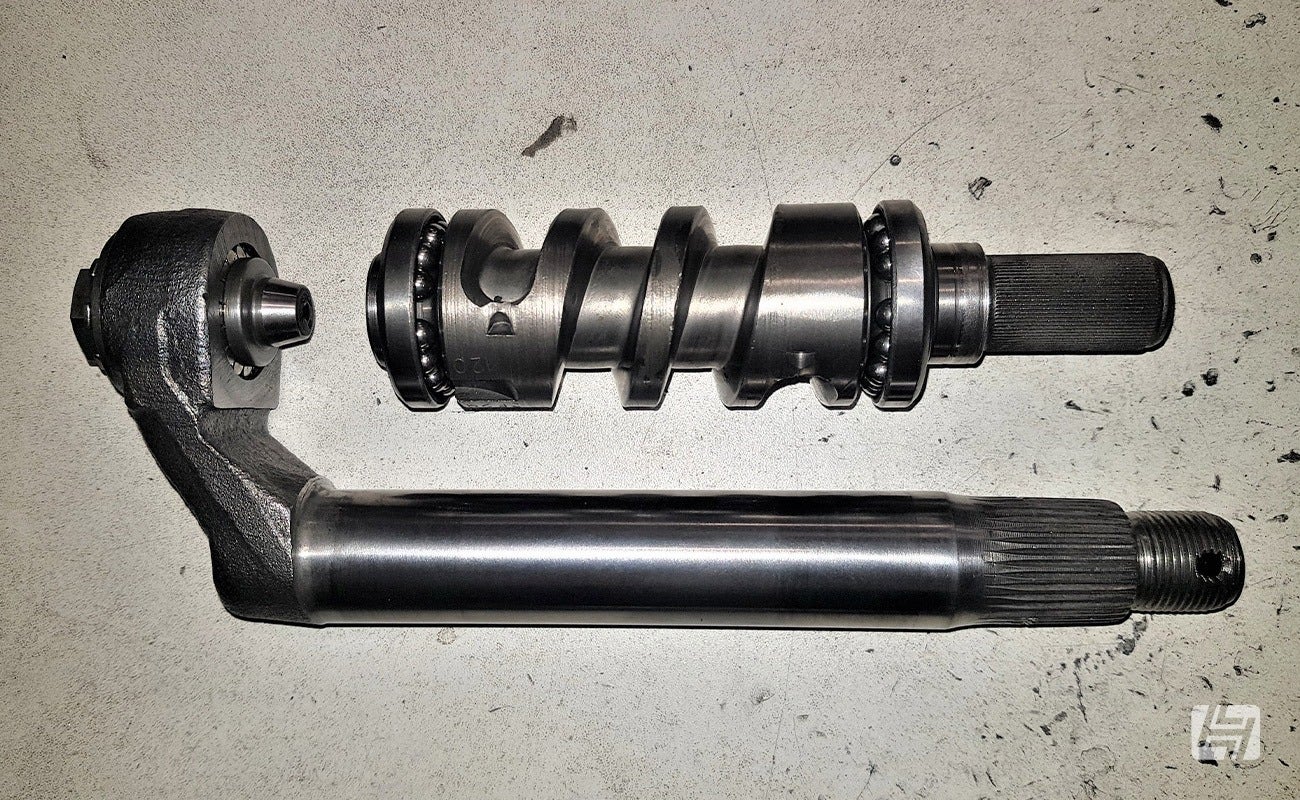

What is a worm and roller?
As time progressed the peg was replaced by a grooved roller to engage the worm. It works in the same way as an earlier worm and peg with the rotation of the worm forcing the roller to move left or right. This later design promises to be more positive when turning the steering and its components wear less. It also has a different set of gear ratios that should make the steering feel lighter.
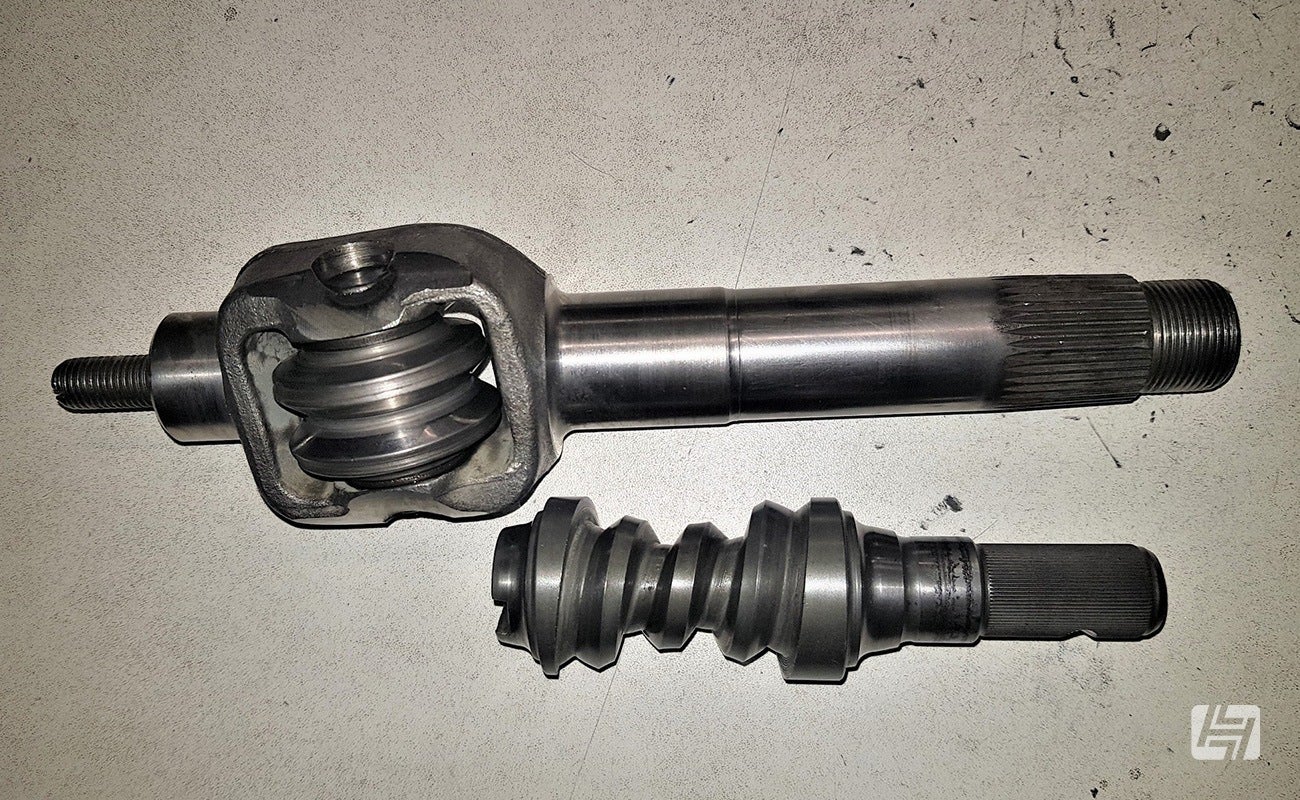

Are VW steering boxes handed for LHD and RHD?
- Split Screen steering boxes are handed for LHD and RHD. They were supplied to VW by ZF and AE Ross. Both are identical inside, but the AE Ross steering box uses a bolt-on upper column, whereas the ZF’s upper column is pressed into the main case. The cases are cast steel and the covers are a cast magnesium alloy.
- Brazilian Split Screen buses have handed steering boxes for LHD and RHD.
- Early Bay (68-72) steering boxes are handed for LHD and RHD. They are the same as the Splitscreen, apart from how the upper column is attached, and they were only supplied by ZF.
- Late Bay (72-79) steering boxes are all handed for LHD and RHD. They all had an aluminum case and were made by ZF.
- Brazilian-built Bay / Kombi these models were only made in LHD. Some UK imports by Danbury were converted to RHD by turning the box upside down and adapting the right-hand chassis leg to mount it. They use a similar all-in-one column and steering box assembly, but it’s a Gemmer design worm-and-roller type.
- Type 1 Beetle steering boxes were universal, but had a LHD and RHD-specific pitman arm fitted. They are also fitted to Karmann Ghia, Type 3, and Trekker amongst others. Whether early or late, they use a cast steel case and an aluminum or magnesium alloy cover. The cases are cast with the VW logo and, in later years, the Audi interlocking circles. Find Beetle steering boxes online here.
- 1302 and 1303 Beetle steering boxes are handed for LHD and RHD and use a cast steel body, complete with VW logo, and an aluminum cover. 1303 models from 1975 were fitted with a steering rack as standard.
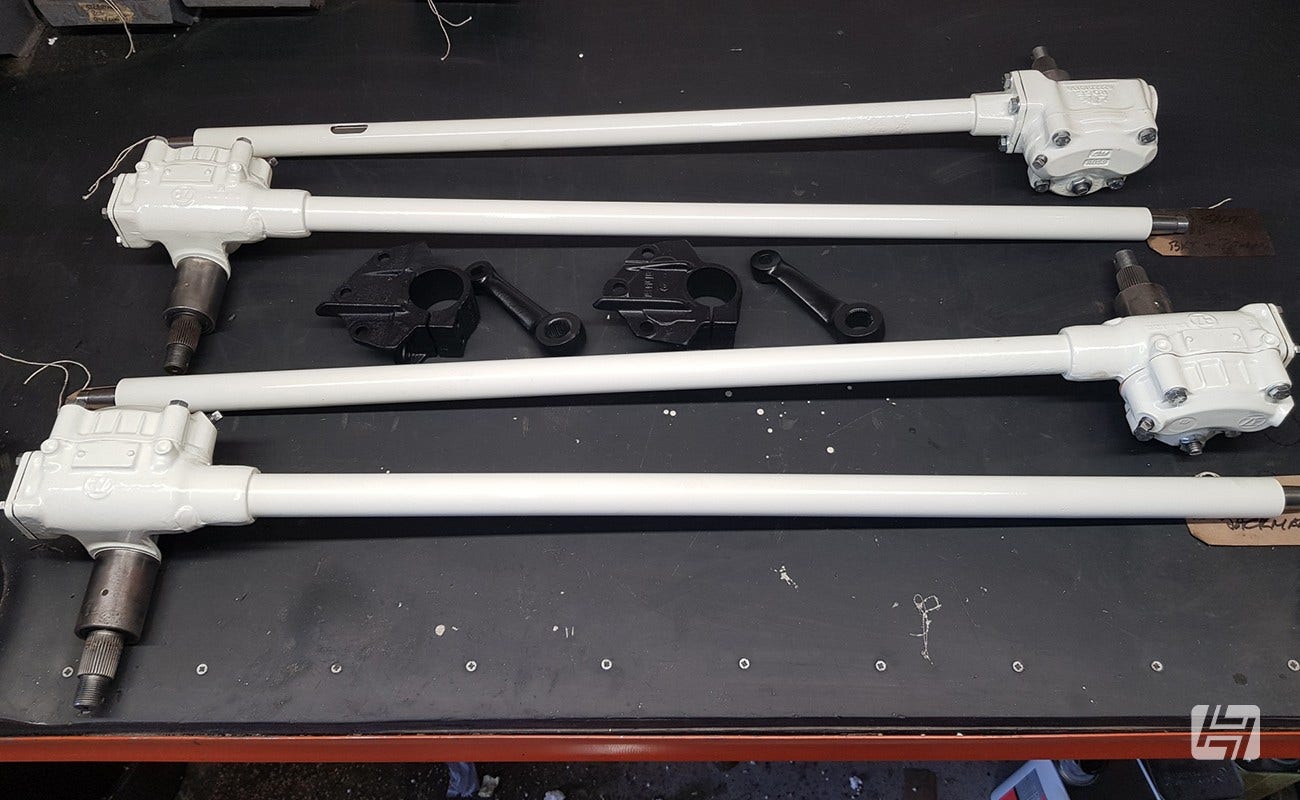

What’s fitted between the steering box and the wheels?
A Pitman arm or drop arm is attached to the steering box’s lever shaft. This is connected to a drag link on Type 2 models, which is in turn attached to a swing lever. And from the swing lever, there are two long tie rods routed to a steering arm on each wheel hub. In addition, a steering damper helps to smooth out shocks and vibrations transmitted through the steering. It’s fitted between the swing lever and the underside of the vehicle with rubber bushes that can perish.
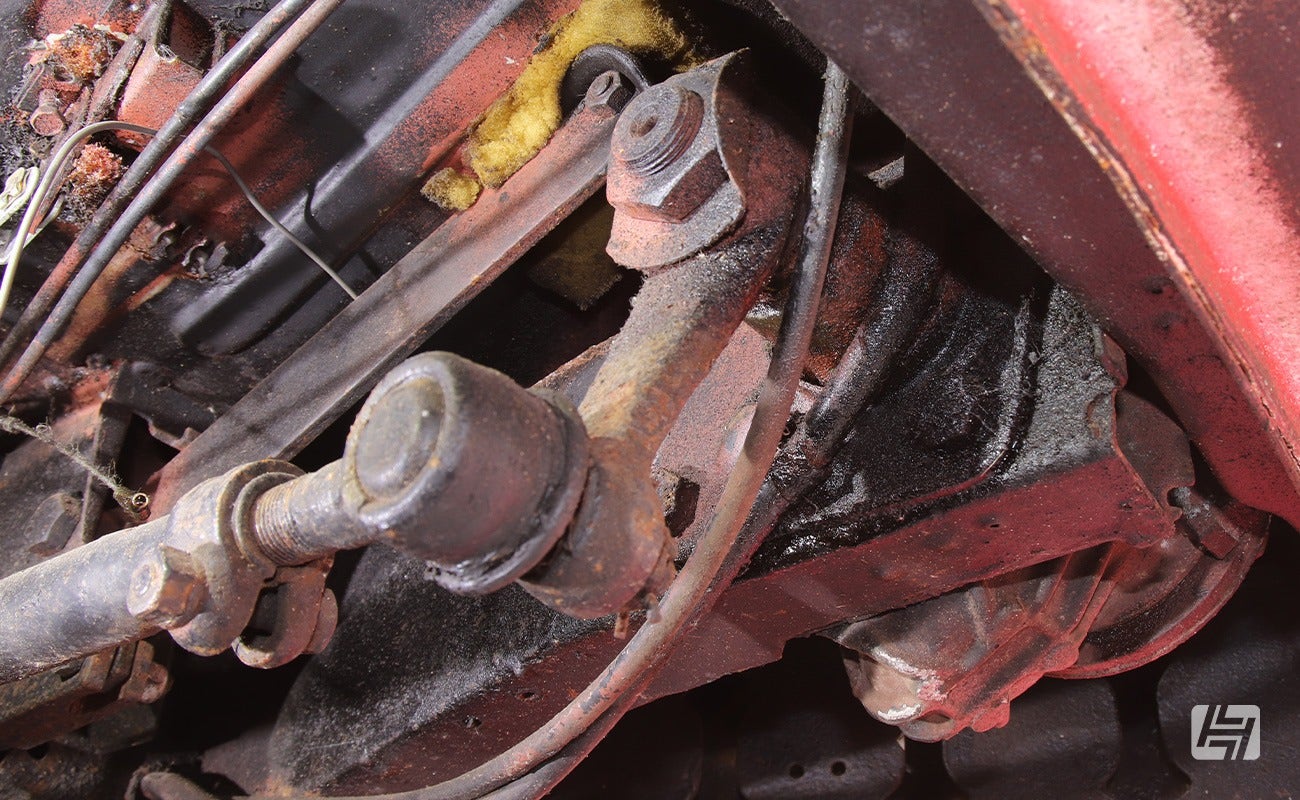

Steering lubrication
The internal components of the steering box are lubricated with SAE 90 oil (some were initially filled with grease although the Late Bay’s workshop manual does stipulate SAE 90). As lube technology has progressed, some of the steering box specialists now use a semi-fluid grease from Penrite instead of SAE 90. It is technically a 1000-weight oil but is designed specifically for steering boxes and Burman-type gearboxes.
The amount of oil can be checked and, if necessary, topped up. There’s a plug on the top of the gear case cover of the steering box. Extract it and check the oil inside is close to the top. If it isn’t, top it up using a squeezy bottle or a syringe – space may be tight.
If there are any grease nipples on the steering linkage, then it helps to pump a small amount of multipurpose grease through to help lubricate any moving components. For this, you will need a grease gun and some multipurpose grease – a pre-filled cartridge is less messy than scooping grease into a gun.
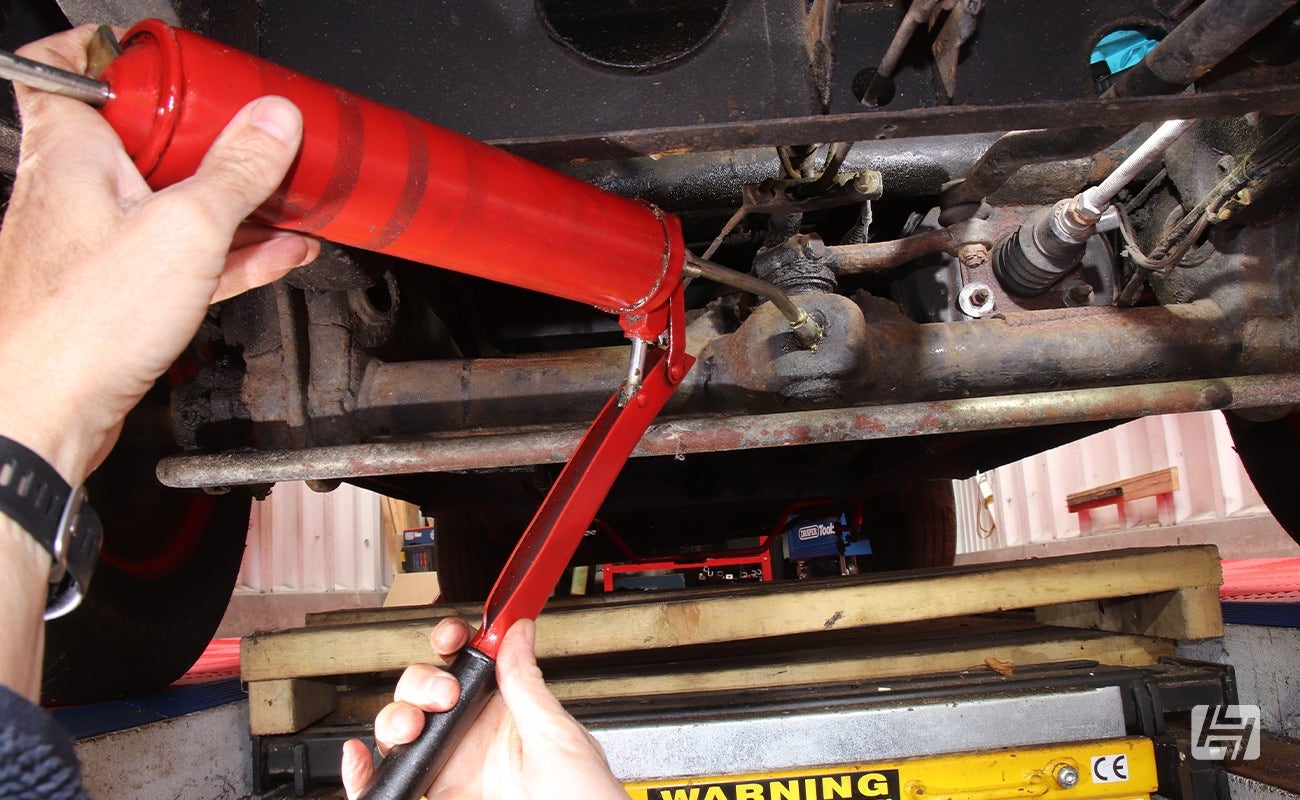

What's wrong with my steering box?
It's worth noting that many complaints of vague steering can be traced back to worn wheel bearings. So before writing your Volkswagen steering box off as scrap, do check the wheel bearings for excess play and ensure they are correctly tightened.
The first test to see whether there’s a problem concerning your VW’s steering box is to turn the steering wheel and measure how much movement is required before the road wheels start to turn. This is easier to do with the front of the vehicle raised and supported on axle stands.
In the UK, the MOT test lists some useful guidelines for how much play is acceptable for a steering box. Assuming the steering wheel is 380mm in diameter (almost 15 inches), the MOT test states that up to 75mm (roughly 3 inches) of turning the steering wheel is allowed before the road wheels start to move. However, some VW workshop manuals recommend only 25mm (one inch) of acceptable play.
If there’s more than 75mm of movement, then there may be an issue with the steering box, but there could be wear and excessive play in the steering linkage, so we recommend looking at these components first. From underneath the vehicle, grab a hold of each one and shake it to feel for movement and lose connections. If the swing lever is a loose fit in its bushes inside its gear case, then this can cause problems with the steering. Also, check that none of these components are damaged, which may cause problems with the steering feeling vague.
If you find there are no problems with the steering linkage, but there’s still excessive movement at the steering wheel before the road wheels turn, then it may be possible to adjust the steering box to help reduce this. However, adjusting a steering box too much can result in greater wear of the internal components and potentially a notchy feel to the steering.
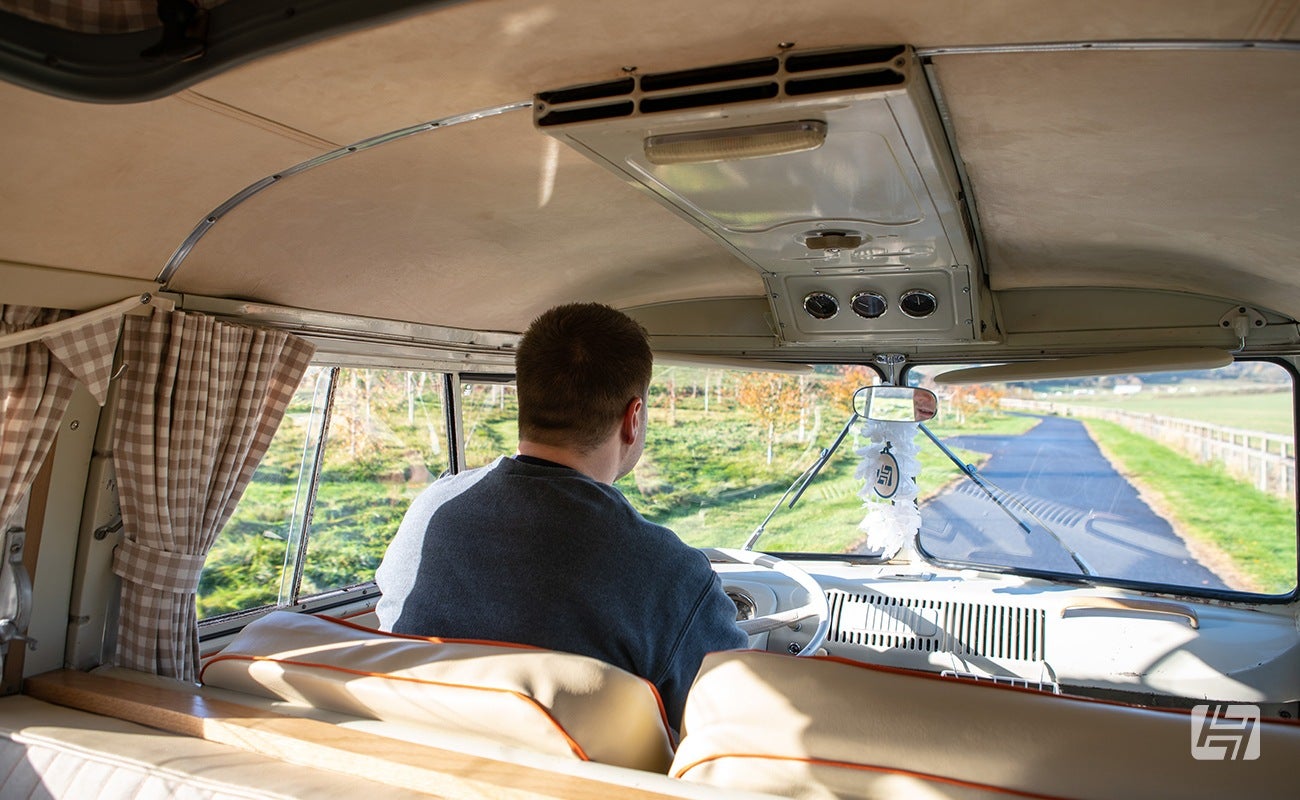

Adjusting a worm and peg steering box
With the front of the vehicle raised and secured, ask someone to turn the steering from lock to lock at the steering wheel. Look for an adjuster screw on the steering box. Slacken its locking nut, then slowly turn the adjuster screw clockwise until the feel of the steering changes. This will move the peg closer to the worm gear. However, the steering must only be adjusted whilst it is 100% centered and only until there is a very slight drag felt as it moves past this point when moving the steering wheel left and right. Note that the dead center is the only place on any VW steering box where there is 100% contact between the peg or roller and worm. Everywhere else on the steering, there is play with more as you go towards full lock either way.
Adjustments should be carried out in tiny amounts. A few degrees can be the difference between play and being overtight. A quarter or half turn is too much, more 12 o’clock to 10 past (60 degrees), and then recheck after the lock nut is tightened as this can pull the adjuster screw up into the case and back out of adjustment.
When adjusting the steering box, you don’t want the steering to feel too loose, but also, you don’t want it to be too stiff. Also, check where the end of the steering column is mated to the steering box. If this moves up and down when turning the steering, then the end float inside the steering box may need to be adjusted. This requires some shims to be added or removed inside the steering box and whilst it can be conducted in situ on a Split Screen or Early Bay, in other cases it requires the steering box to be removed. And there are potentially further complications, such as sourcing new shims for a Late Bay’s steering box, which are no longer available.
If shim adjustment is required, we recommend contacting a specialist because the removal of too many shims can result in internal damage.
Adjusting a worm and roller steering box
There is a similar adjusting screw with a locking nut on the later worm and roller steering box, but the method of reducing play at the steering wheel is different. The front wheels still need to be raised and the vehicle securely supported.
The Pitman arm should be detached from the drag link, leaving the Pitman arm attached to the steering box. This will make it easier to judge the amount of free play at the Pitman arm instead of checking it at the steering wheel. Slacken the adjuster screw’s locking nut, then turn the adjuster screw in a little whilst rocking the Pitman arm to see if the free play is reduced. Once adjusted, the wheels must be perfectly aligned straight ahead, and then the length of the drag link adjusted to suit the gap left. If the drag link is simply reattached and either the road wheels or Pitman arm are moved to accommodate it, the result will give play in the steering when driving straight ahead. This is because the road wheels will move back to straight ahead and the steering box will be pulled away from dead center – the only place where it has zero play if correctly adjusted.
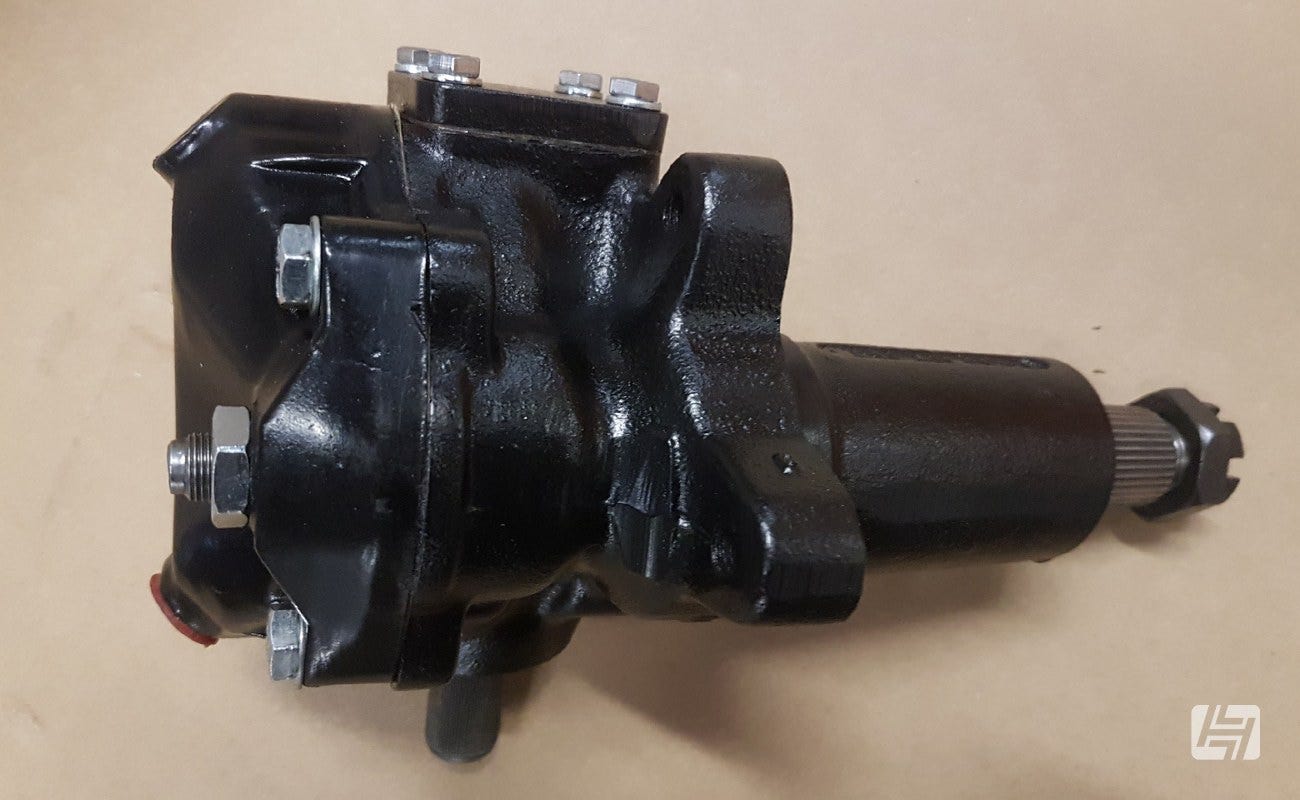

Is my steering box worn?
If our advice on checking the steering linkage, adding oil or grease, and adjusting the steering box doesn’t help reduce the amount of excessive movement at the steering wheel and the vagueness or notchy feel of the steering, then the internal components of the steering box may be worn. Unfortunately, only a few parts are available to partly overhaul these steering boxes and new units are only available for some models.
Specialists such as N2 Engineering overhaul steering boxes on an exchange basis.
Removing a steering box from your VW can be potentially difficult and result in more parts being required. In some cases, the end of the steering column needs to be detached. The Pitman arm needs to be released, which can often be seized. Removing the steering box with the Pitman arm still attached isn’t possible on some VWs because the assembly is too large. Consequently, this can result in damaging the Pitman arm.
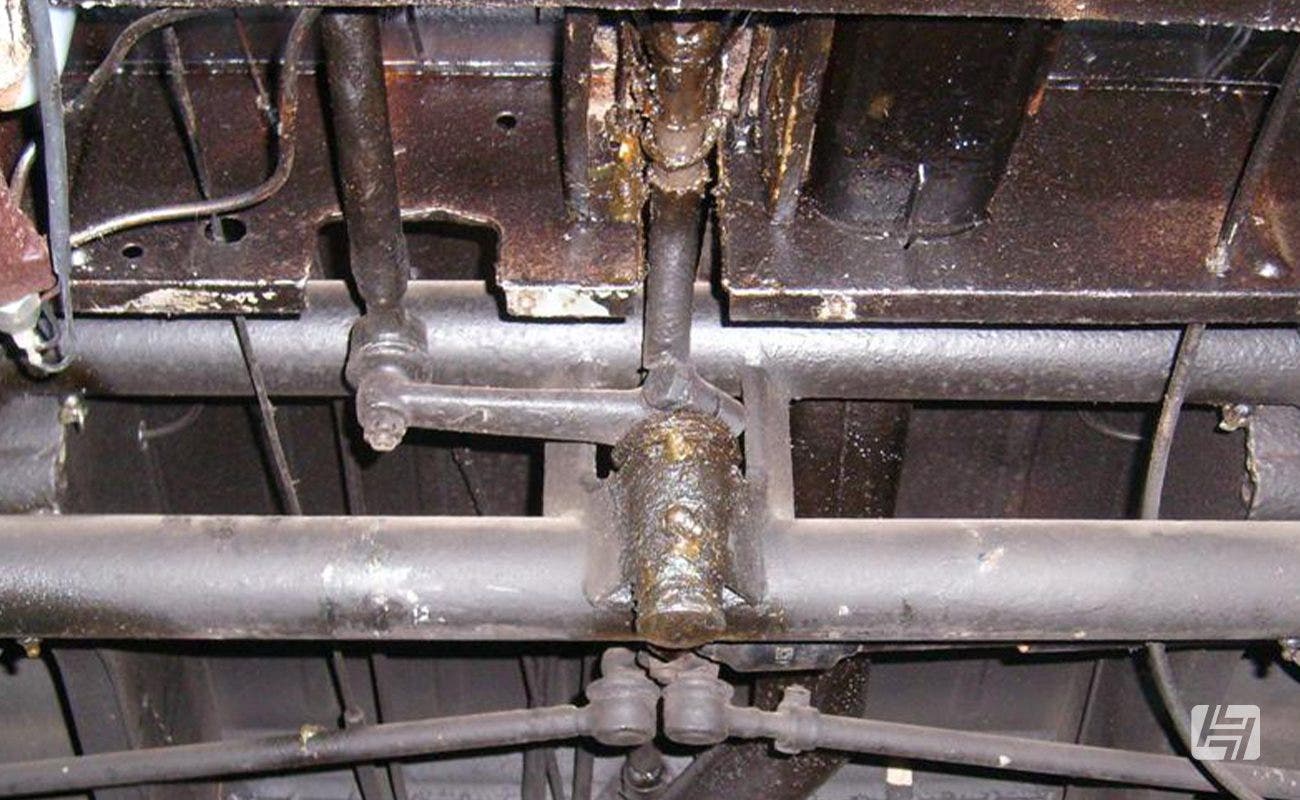

Alternatives and upgrades
Fitting a more modern rack-and-pinion steering has been completed by a number of VW specialists and owners, although there are no off-the-shelf kits available at present. This type of conversion is very involved, requiring mounting brackets to be fitted to secure the steering rack and custom linkage between the column and rack, not to mention sourcing the correct length of steering track rods and track-rod ends.
There’s one popular upgrade available for the standard steering box, which concerns the steering column and fitting electric assistance (power steering). This consists of an electric motor attached to the column, which makes it easier to turn the steering wheel. Some conversion kits are speed sensitive, so steering assistance is reduced at higher speeds, but much greater at slower speeds, such as parking. This is achieved by fitting a speed sensor at the gearbox or wheel hub. Check out Litesteer for more details.
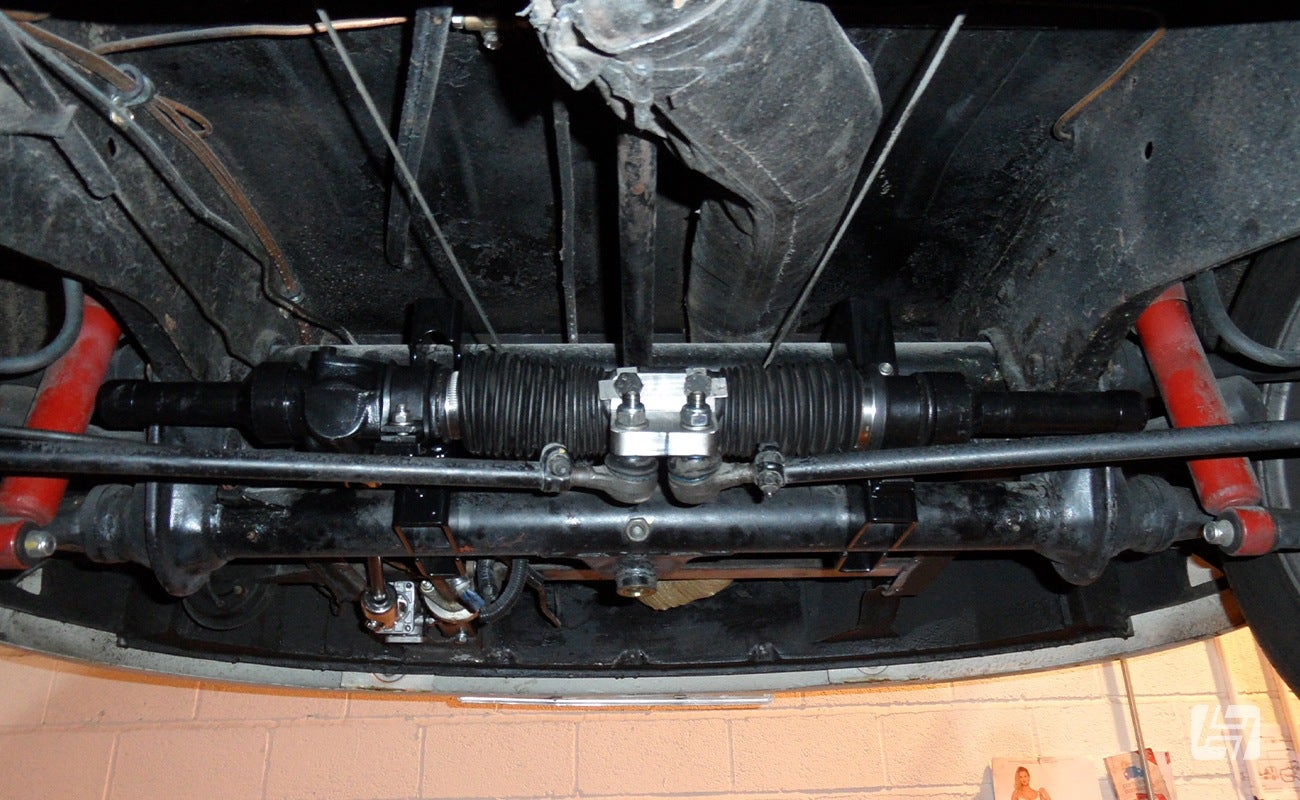

We've certainly learned a few things putting this article together, and we hope it will prove to be useful for you too. Additional thanks to N2 Engineering for technical advice.
Rob




 Bug
Bug
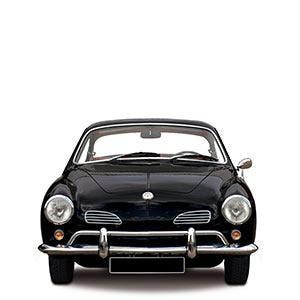 Karmann Ghia
Karmann Ghia
 Bay Bus
Bay Bus
 Vanagon
Vanagon
 Eurovan
Eurovan
 Transporter T5
Transporter T5
 Rabbit Mk1
Rabbit Mk1
 Golf Mk2
Golf Mk2


 911
911
 996
996
 997
997
 986 Boxster
986 Boxster
 987 Boxster
987 Boxster
 912
912
 944
944
 924
924






